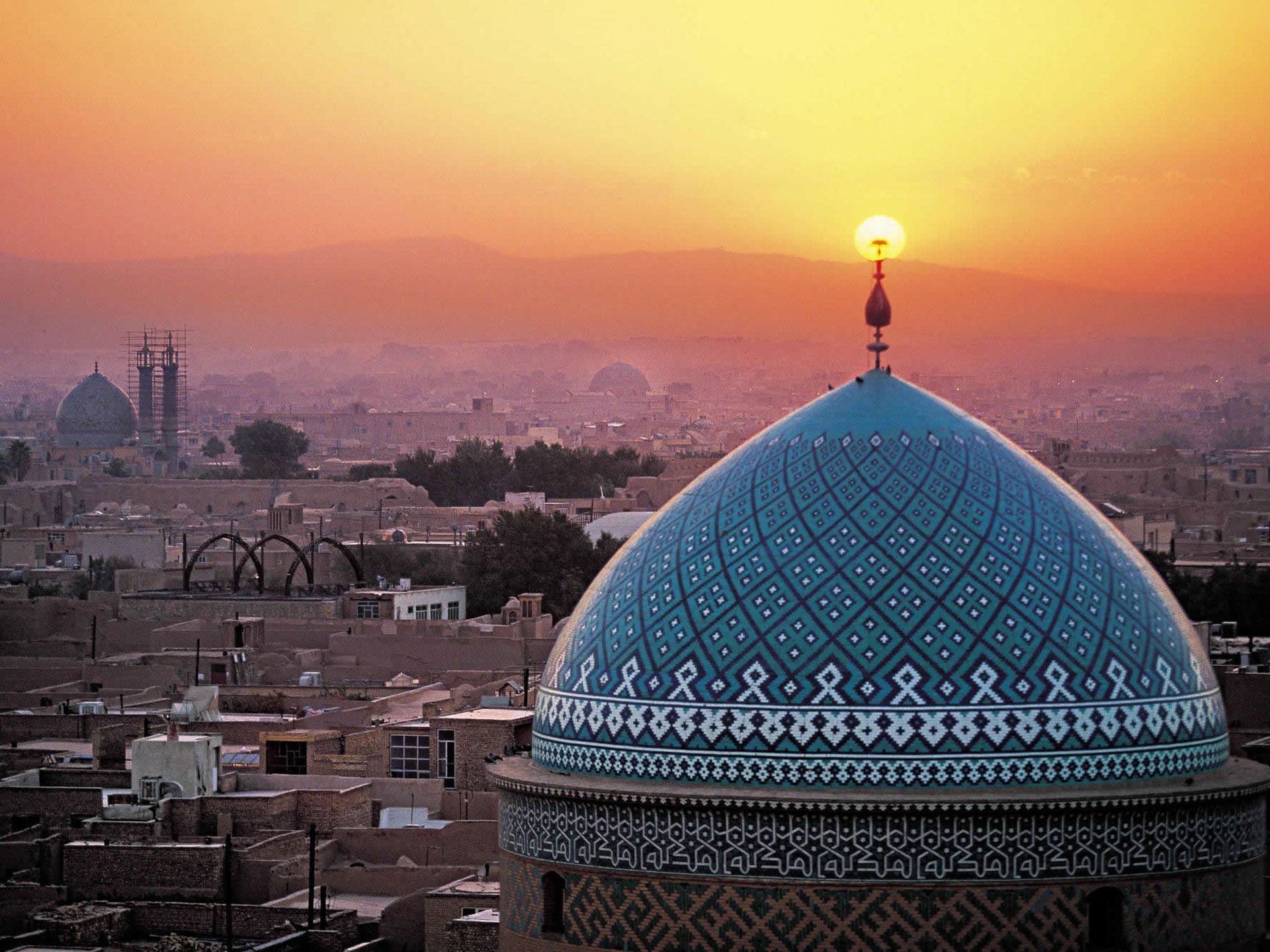Kermanshah Attractions
Only 5km. further along the Kermanshah road one reaches a roundabout. The left turn here goes past the oil refinery and into Kermanshah itself, but turn right for the famous Sassanian grottoes of Taq-e Bostan, about 1km. along the road, passing between the remnants of mud-brick walls believed to have enclosed another Sassanian paradeisos, probably for deer.
At the end of the road is an artificial pool fed by a sacred spring welling from the rocky cliff behind, in which are the two grottoes.
The entrance is by a gate in the garden in front of the grottoes which are normally open from 8 a.m. to about sunset.
A small charge is made for admission. If the entrance is closed, inquiries of the many children from the little Kordish hamlet nearby will almost certainly produce the guardian within a few moments.
The carved capitals now known to have come from Bisotun, and other fragments of statuary, are scattered in the little garden. The early afternoon is the best time to photograph both of the grottoes and a bas-relife of the investiture of Ardeshir II (A.D.379-383) on the cliff wall just before reaching the grottoes.
This relief shows the god Hormuzd(Ahura Mazda) on the right, and a rare portrayal of Mithras standing on a lotus, with the sun rays forming a halo, on the left.
Ardeshir II is accepting the ribboned diadem from Hormuzd, and Mithras holds a ceremonial bundle of sacred twigs, known as the barsom often depicted in religious scenes of later Achaemenian date. A vanquished Roman lies under the feet of Ardeshir and Hormuzd.
Next comes the small iwan artificially cut from the rock in the reign of Shapur III (A.D.383-388), son of Ardeshir II, and the relifes at the back show Shapur III with his grandfather, Shapur II (A.D.309-379), on the right, together with an inscription in Pahlavi.
The largest of the iwans is unique in its decoration. It was probably intended to from the center piece of a triple iwan of which the third small iwan was never constructed. The entrance is decorated with a fantastic Tree of Life embodying Graeco-Roman acanthus leaves and possibly elements of Indian plants, according to Dr.Porada, while in the centre a royal crescent is flanked by winged figures carrying ribboned rings.
On the right is an inscription commemorating the visit of the nineteenth century A.D. Qajar king, Naser ed- Din Shah. Inside the grotto are some of the most astonishing of all bas-reliefs in Iran. The back is divided into an upper and lower panel depicting below, in high relief, a king in full armour, holding a lance and riding an armoured charger. Most authorities believe this is Khosrow II(A.D.591-628) on his favourite horse Shabdiz, although Erdmann took it to be king Piruz (A.D.459-484). The upper panel depicts the investiture of the king, with Hormuzd and probably the goddess of water, Anahita.
The two side walls depict what are perhaps the most vivid of all bas-reliefs, two royal hunts in enclosed paradeisos in a series of stills – the left (facing the rear of the iwan) showing a royal boar hunt with the king in various stages of the chase, standing in a boat in the marshes, shooting an arrow at a herd of wild boar driven into the reeds by massed elephants, and accompanied by musicians in smaller boats. The opposite panel depicts the same king stag-hunting, mounted like his nobles, on horseback, a royal parasol held over his head, while more musicians sing and play.
On the left wall, high up towards the rear, a much later, coloured and very poor relief shows the Qajar Governor of the Kermanshah area, Mohammad Ali Mirza Dowlat Shah (A.D.1822), son of the king, Fath Ali Shah, with his two sons.
(see Taq-e Bostan by Shinji Fukai and Kiyoharu Horiuchi, Vols. I & II, The Institute of Oriental Culture, The University of Tokyo,1972)
In 1970, a team of Iranian archaeologists led by Mr. Kambakhsh Fard excavated a Parthian cemetery on the summit of a cliff in the immediate area. About 50-60 m.
Immediately to the west of Taq-e Bostan, another Parthian site has been revealed on the hill known as Kuh-e Paroo. Obsidian flints and prehistoric pottery were among the finds in this dig.
Other attractions:
Takieh Mo’aven ol-Molk , Ghoori Ghaleh Cave, Temple of Anahita, Piran waterfall




































